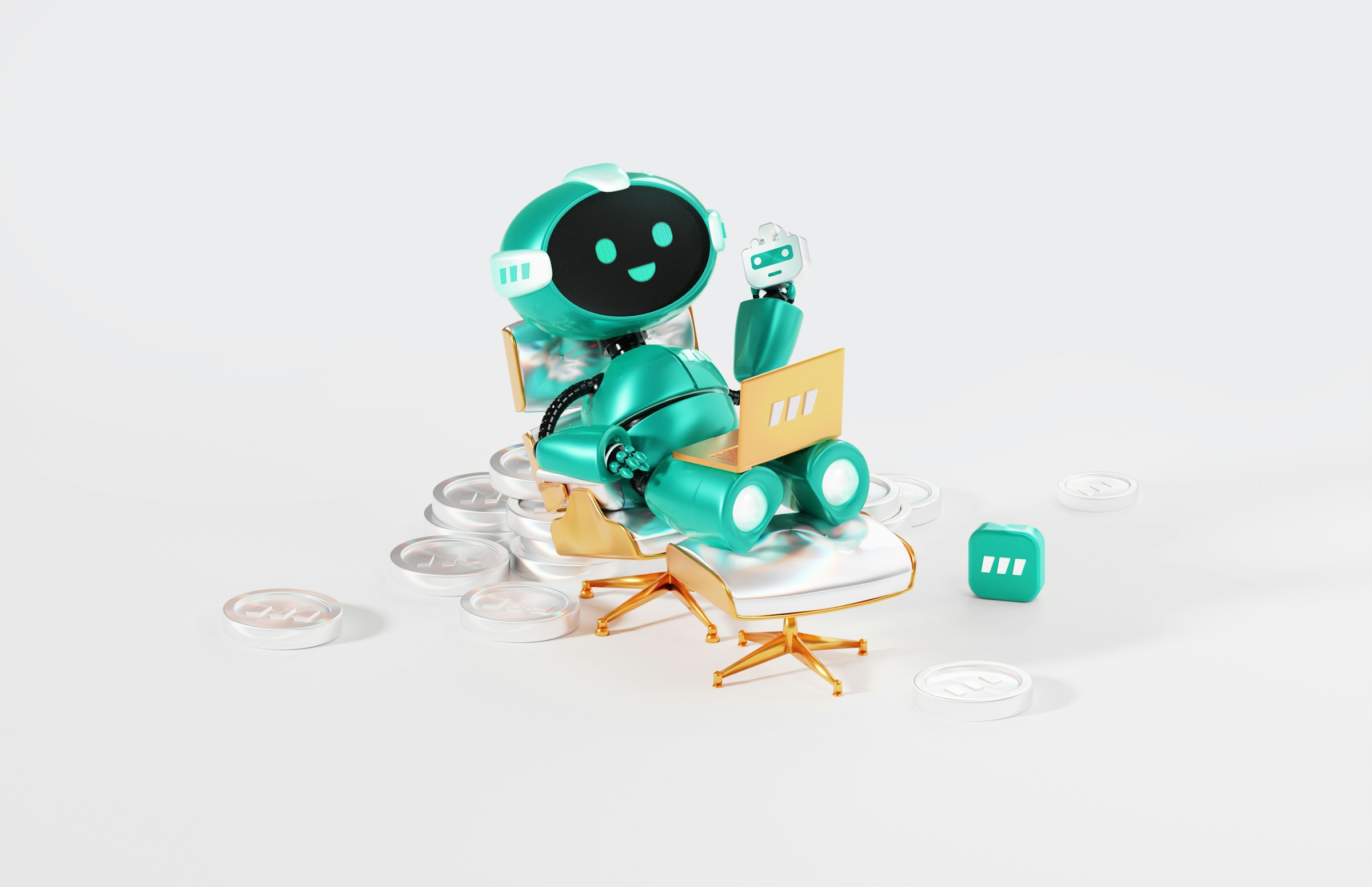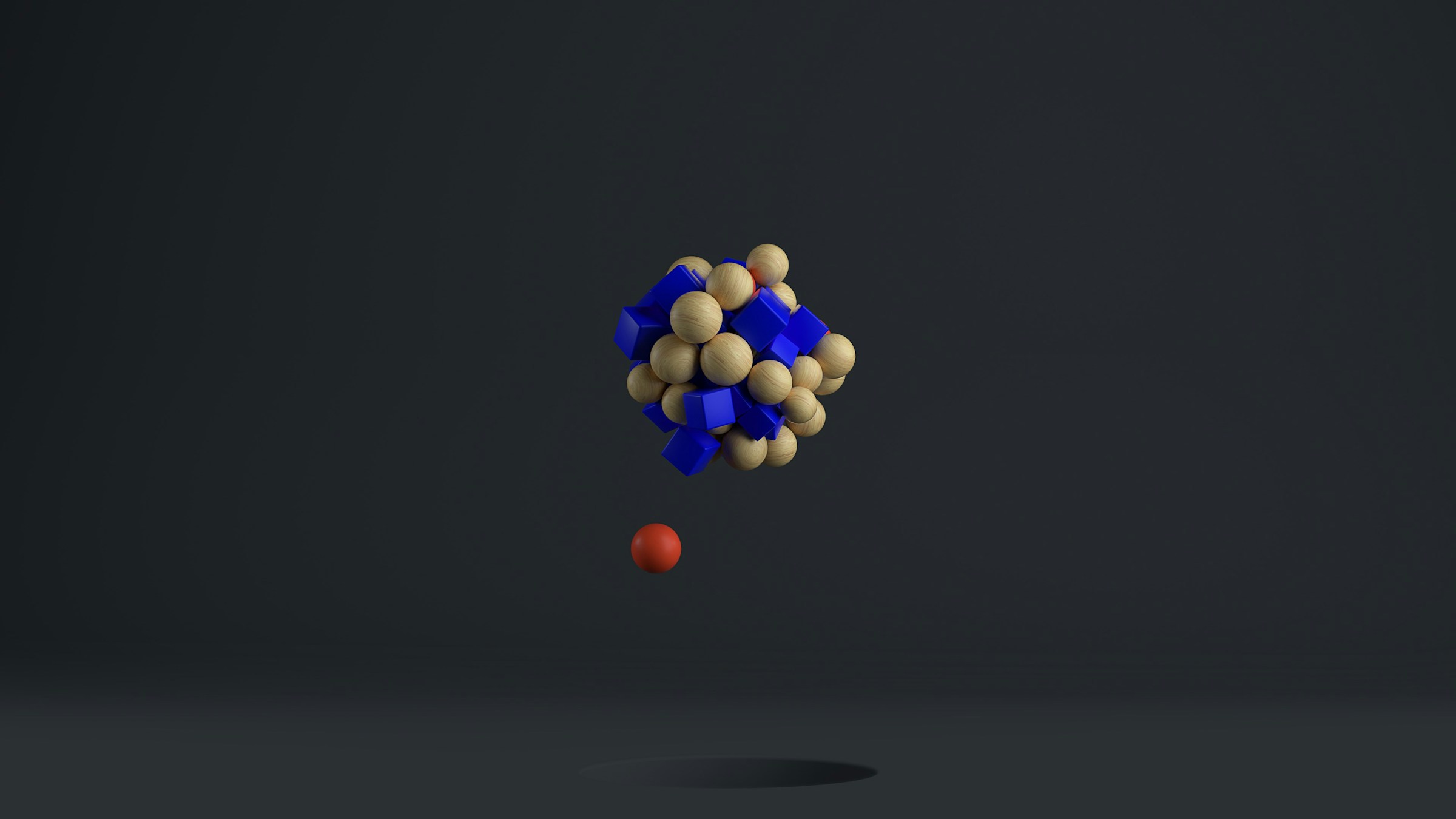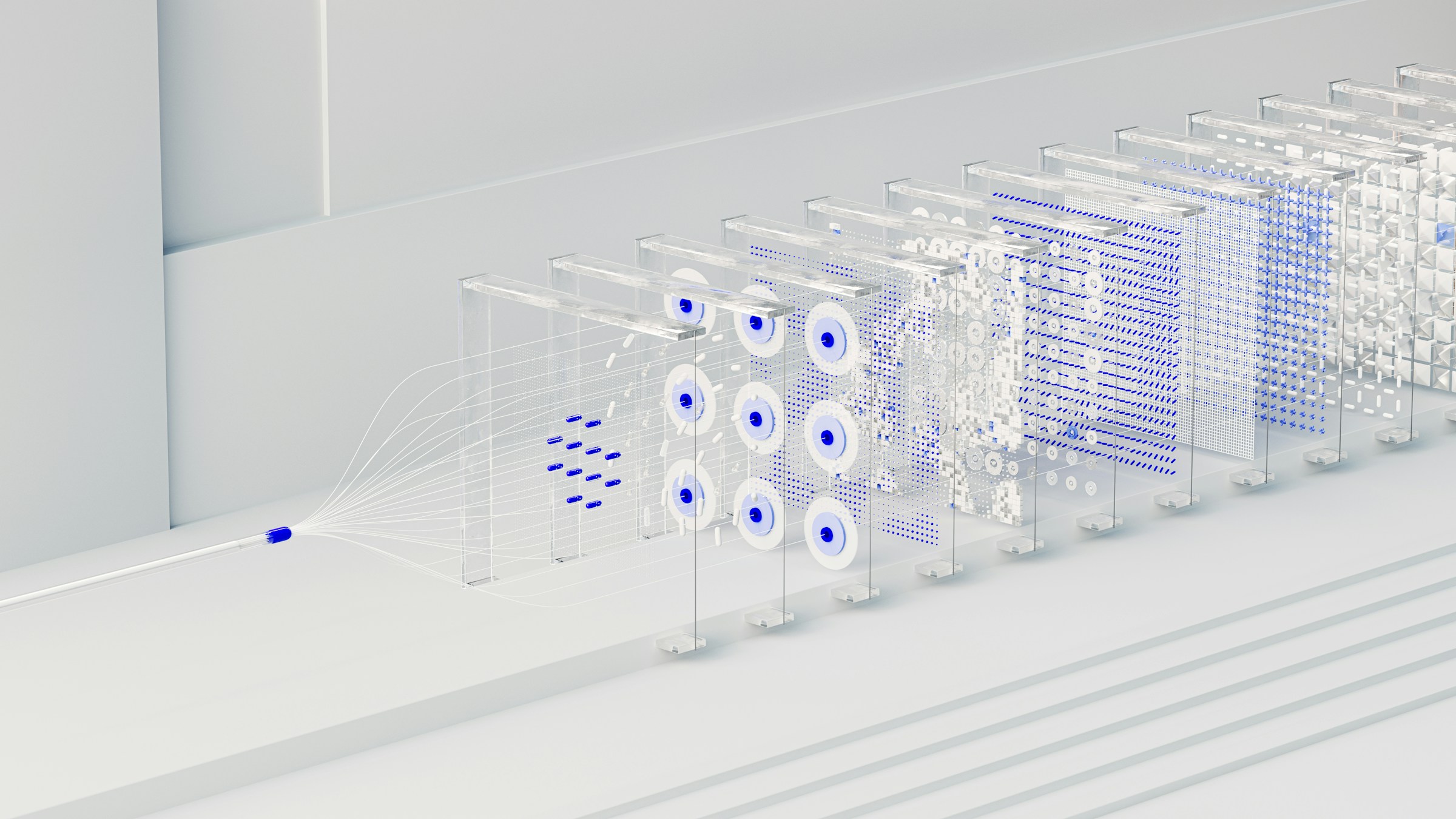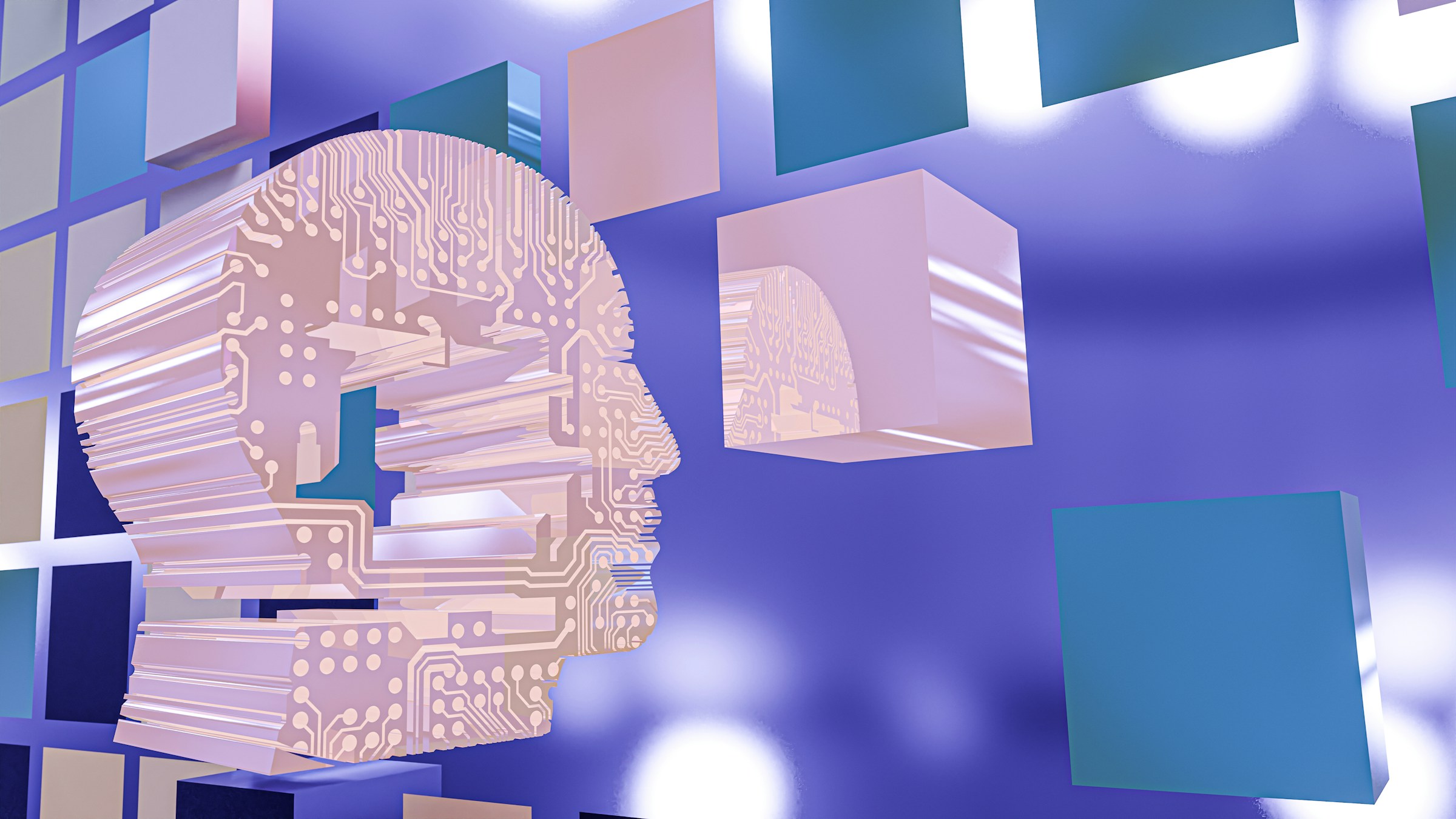Content
Consider you have an assistant that can help you with your everyday tasks. You can give them commands, and they reliably complete their tasks without questions. Now consider that this assistant is a software rather than a human. This is the basic concept of AI Agents. They use artificial intelligence technologies to carry out tasks or activities for a user. The more advanced an AI agent is, the fewer instructions or commands a user has to give them for the agent to complete a task.
Instead, the user can provide some general parameters, and the AI agent can figure out the rest. This kind of wise, almost autonomous behavior makes AI agents so appealing. They can help humans tackle complex challenges such as optimizing business operations, analyzing large data sets, and creating new content. This guide will explore AI agents in more detail, including how they work, why they matter, their potential risks, and how to build trustworthy AI systems to mitigate them.
OpenSesame’s AI agent infrastructure can help you create more reliable and trustworthy AI systems. Offering a structured way to build AI agents can help optimize the process and ensure your end product is safe, secure, and compliant with industry standards.
Table of Contents
What Exactly Are AI Agents?
How Do AI Agents Work
Types of AI Agents
How To Create and Improve AI Agents in 10 Simple Steps
Benefits of AI Agents
Real-World Use Cases of AI Agents
Try Our AI Agent Infrastructure Management Software for Free Today
What Exactly Are AI Agents?

AI agents are intelligent software programs designed to perform tasks on behalf of a user. They can automate processes, make decisions, and interact with their environment. “AI agents are like magic,” said Patrick Hamelin, software engineer lead at Botpress. “They’re these magical entities that go beyond typical chatbots.” AI agents are entities designed to perceive their environment and take actions to achieve specific goals.
These agents can be software-based or physical entities. They perceive their environment through sensors, process the information using algorithms or models, and then act using actuators or other means. These agents can be deployed in various applications to solve complex tasks across multiple enterprise contexts, from software design and IT automation to code-generation tools and conversational assistants.
They use the advanced natural language processing techniques of large language models (LLMs) to comprehend and respond to user inputs step-by-step and determine when to call on external tools.
The Basics of AI Agents
AI agents are intelligent software programs designed to perform tasks on behalf of a user. They can automate processes, make decisions, and interact with their environment. “AI agents are like magic,” said Patrick Hamelin, software engineer lead at Botpress. “They’re these magical entities that go beyond typical chatbots.” AI agents are entities designed to perceive their environment and take actions to achieve specific goals.
These agents can be software-based or physical entities. They perceive their environment through sensors, process the information using algorithms or models, and then act using actuators or other means. These agents can be deployed in various applications to solve complex tasks across multiple enterprise contexts, from software design and IT automation to code-generation tools and conversational assistants.
They use the advanced natural language processing techniques of large language models (LLMs) to comprehend and respond to user inputs step-by-step and determine when to call on external tools.
Related Reading
• Trustworthy AI
• AI Problems
• Contextual AI
• AI Decision Making
How Do AI Agents Work

At the core of AI agents are large language models (LLMs), often called LLM agents. Traditional LLMs, such as IBM® Granite™ models, produce their responses based on the data used to train them and are bounded by knowledge and reasoning limitations. In contrast, agentic technology uses tools called on the backend to obtain up-to-date information, optimize workflow, and create subtasks autonomously to achieve complex goals.
Goal Initialization and Planning: How AI Agents Get Started
Although AI agents are autonomous in decision-making, they require goals and environments humans define.
There Are Three Main Influences On Autonomous Agent Behavior
The team of developers that design and train the agentic AI system.
The team that deploys the agent and provides the user access to it.
The user provides the AI agent with specific goals and establishes available tools.
Given the user's goals and available tools, the AI agent performs task decomposition to improve performance. Essentially, the agent creates a plan of specific tasks and subtasks to accomplish the complex goal. For simple tasks, planning is optional. Instead, an agent can iteratively reflect on and improve responses without planning its next steps.
Reasoning Using Available Tools: How AI Agents Problem Solve
AI agents base their actions on the information they perceive. AI agents often need the knowledge to tackle all subtasks within a complex goal. To remedy this, AI agents use their available tools. These tools can include external data sets, web searches, APIs, and even other agents. After the missing information is retrieved from these tools, the agent can update its knowledge base. This means that each step of the way, the agent reassesses its action plan and self-corrects.
To help illustrate this process, imagine a user planning their vacation. The user tasks an AI agent with predicting which week in the next year would likely have the best weather for their surfing trip in Greece. Since the LLM model at the agent's core does not specialize in weather patterns, the agent gathers information from an external database of daily weather reports for Greece over the past several years.
Despite acquiring this new information, the agent still cannot determine the optimal weather conditions for surfing, so the next subtask is created. For this subtask, the agent communicates with an external agent who specializes in surfing. In doing so, the agent learns that high tides and sunny weather with little to no rain provide the best surfing conditions.
The agent can now combine the information it has learned from its tools to identify patterns. For example, it can predict which week in Greece will likely have high tides, sunny weather, and a low chance of rain next year. These findings are then presented to the user. This information-sharing between tools allows AI agents to be more general-purpose than traditional AI models.
Learning and Reflection: How AI Agents Improve Over Time
AI agents use feedback mechanisms, such as other AI agents and human-in-the-loop (HITL), to improve the accuracy of their responses. Let’s return to our previous surfing example to highlight this. After the agent forms its response to the user, the agent stores the learned information along with the user’s feedback to improve performance and adjust to user preferences for future goals.
If other agents were used to reach the goal, their feedback may also be used. Multi-agent feedback can be instrumental in minimizing human users' time providing direction. However, users can also provide input throughout the agent's actions and internal reasoning to better align the results with the intended goal.
Feedback mechanisms improve the AI agent's reasoning and accuracy, commonly called iterative refinement. AI agents can also store data about solutions to previous obstacles in a knowledge base to avoid repeating the same mistakes.
Discover OpenSesame: The Future of AI Agents
OpenSesame offers innovative AI agent infrastructure software that grounds AI models in reality. Our platform reduces hallucinations, enhances reliability, and saves hours of manual checking. Key features include real-time hallucination reports, business data integration, multimodal AI expansion, and open-source frameworks.
We provide ungrounded truth recognition, prompt template extraction, accuracy scoring, and a hallucination dashboard. OpenSesame allows businesses to confidently build trustworthy AI systems, offering real-time insights without latency for high-performing, reality-grounded AI solutions.
Try our AI agent infrastructure management software for free today!
Types of AI Agents

The Lowdown on Reactive vs. Proactive Agents
When it comes to artificial intelligence agents, one of the first distinctions that comes to mind is the difference between reactive and proactive agents. Reactive agents respond to immediate stimuli in their environment. They take actions based on these stimuli to execute their tasks. Proactive agents, on the other hand, take initiative.
They plan to achieve their goals. The difference between the two can be illustrated with a simple example. Consider a computer game. A reactive agent in this game would be a character that simply reacts to a player’s actions. If the player approaches, the character might run away, attack, or perform other actions based on the player’s proximity.
A proactive agent, in contrast, would have a goal, such as defeating the player or escaping from the player. Instead of simply reacting to the player’s actions, the proactive agent would assess the situation and take the appropriate actions to achieve its goal.
Static vs. Dynamic Environments: What’s the Difference?
AI agents operate in environments that can be either fixed or dynamic. Fixed environments have a static set of rules that do not change. In contrast, dynamic environments constantly evolve, requiring agents to adapt to new situations. To illustrate the difference between the two, consider a chess game. Chess has a fixed set of rules that do not change. Therefore, a chess-playing AI agent would be operating in a fixed environment.
However, if you were to create a simulation of a robot vacuum, the environment would be dynamic. As the robot moves through its environment, it collects information that helps it improve performance. Additionally, the environment may contain pets or children, which changes the layout of the rooms and creates new obstacles for the robot to navigate.
Multi-Agent Systems: Working Together for a Common Goal
Multi-agent systems involve multiple AI agents working together to achieve a common goal. These agents may have to coordinate their actions and communicate with each other to achieve their objectives. An example of a multi-agent system is a group of drones working to identify and extinguish a fire. In this scenario, the drones would share information about the fire and work collaboratively to perform their task.
Related Reading
• Challenges of AI
• How Can AI Help My Business
• Model Evaluation Metrics
• Unpredictable AI
• How to Reduce Bias in AI
How To Create and Improve AI Agents in 10 Simple Steps

1. Utilize OpenSesame.dev for Enhanced AI Agent Development
OpenSesame.dev offers cutting-edge AI agent infrastructure software that helps ground AI models in reality. This platform reduces hallucinations, improves reliability, saves businesses hours of manual checking, and provides real-time insights without latency for high-performing, reality-grounded AI solutions.
Key features include real-time hallucination reports, business data integration, multimodal AI expansion, and open-source frameworks. OpenSesame also provides ungrounded truth recognition, prompt template extraction, accuracy scoring, and a hallucination dashboard. With OpenSesame, businesses can build trustworthy AI systems with confidence.
2. Clearly Define Your Objective to Improve AI Agents
To commence the development of AI agents, businesses first need to clarify the purpose and objective of having an AI agent. Try to explain what you need for an AI agent app. Do you need it to sort the documents or to handle customer queries? This will give you a perspective on the development, and if you’re having a tough time figuring this out, you can take the help of AI consulting services.
3. Choose the Right Frameworks and Libraries to Create AI Agents
You must train the fundamental AI model to process the data and make decisions. For this, you need to choose a framework and libraries that allow AI developers to streamline the development process and enable faster prototyping. You can take the help of leading technologies such as OpenSesame.dev.
4. Select a Programming Language for Your AI Agent
Programming language is a crucial resource for AI agent development as it helps in the implementation of algorithms and access to specialized libraries and frameworks. Python is the most preferred choice for AI development as it’s simple, easy to process, and highly versatile.
5. Gather Quality Data for Training AI Agents
Your agents in AI need data to process and analyze. Hence, you must collect quality data to train the machine learning models effectively. You can use methods like crowdsourcing or gathering data from off-the-shelf datasets. Just ensure the data is high-quality, unbiased, error-free, and well-cleaned. Data quality will determine the accuracy and dependency of your artificial agents in AI. This is a tedious and highly skill-demanding job. We suggest hiring data science services if you don’t want to get overburdened.
6. Design the Fundamental Architecture of Your AI Agent
Next, you need to design a robust architecture for your AI agents. Make sure that the structure is highly scalable, modular, and performance-driven. Keep the architecture open for integration so that other components of AI agents can be paired smoothly.
7. Start the Model Training of Your AI Agent
Once adequate data is collected and the basic architecture is ready, it’s time to train the AI agent model. At this stage, AI developers often engage in activities such as data feeding in the model, creating the environment for the AI agent, implementing the learning experience, optimizing the decision-making abilities, and pulling all the components together to commence the training. To achieve perfection at this stage, selecting an appropriate model from random forests, neural networks, and decision trees is essential. Confirm and validate the model's functioning using validation data. Ensure the model can learn continuously.
Deployment of AI Agent Model After successful model training, it’s time to deploy it using tools like serverless platform, Docker, WebAssemble, or Kubernetes. You can choose the deployment ecosystem according to your requirements. Through the deployment, AI developers have to containerize the model and its linked components. In addition, you need to:
8. Refine and Optimize Your AI Agent Model
Create APIs to facilitate communication. Ensure that the deployment environment is fully secured and has adequate privacy standards. Set up the user interfaces and interaction mechanisms for users.
9. Test Your AI Agent Model
To ensure that your AI agents perform accurately and make wise decisions, you must ensure that the functional model is free from bugs and errors and does not misbehave. Don’t forget to conduct user acceptance testing to ensure the model can handle the user's needs and expectations.
10. Monitor and Optimize Your AI Agent's Performance
Post the deployment, you need to make sure that you’re continually observing the performance of your artificial intelligence agents. You need to feed new data and create extra user interaction points. Additionally, we recommend regularly updating the underlying structure and scaling it according to your business needs. This will warrant that the agents in AI can grow with your growing needs.
Benefits of AI Agents

1. AI Agents Enhance Operational Efficiency
AI agents are the ideal solution for organizations looking to enhance their operations. These intelligent agents help automate mundane tasks and optimize resource use, transforming workflow management.
Automating Routine Tasks
AI agents can handle a wide range of tedious and repetitive work. You can implement a utility-based agent into your existing workflow. Integrating an AI agent equipped with Optical Character Recognition (OCR) and Natural Language Processing (NLP) into your workflow can significantly improve data management. These agents can read and extract data from diverse document formats, such as scanned images and PDFs.
Additionally, you can program the agents to cross-check the extracted data against pre-defined rules and databases, ensuring data accuracy and consistency. This level of precision makes the AI agents ideal for handling monotonous tasks like data entry, processing, invoice handling, and so on, freeing up human resources for higher-value activities.
For example, while following manual invoice processing, Canon struggled with a four-month backlog until the company decided to bring AI agents to its rescue. They implemented 135 AI-enabled UiPath robots to extract data from invoices, validate it, and input it into accounting software.
By implementing these AI agents, the company could eliminate the backlog within just a month. It could also free its staff from these monotonous tasks and allow them to focus on more value-adding work.
Optimizing Resource Utilization
Businesses can configure AI agents to gather data from multiple sources, such as production logs, sales records, and customer interactions. AI agents will comprehensively view your business environment by connecting to these critical data sources.
These strategic assistants can process and interpret the data to identify patterns, trends, and anomalies that may significantly impact resource allocations, thereby enhancing operational efficiency.
Businesses can also leverage advanced AI agents to analyze nuanced data, such as employee performance, workload demands, and shift patterns, to create efficient staff schedules.
For example, a call center can use AI agents to predict the peak operational hour and schedule more support agents for that particular period, minimizing customer waiting time.
In another setup, for example, in a hospital, AI agents can create a schedule of specialized doctors and medical professionals based on the type of patients expected in a given period to ensure the best care.
2. AI Agents Ensure a Better Customer Experience
Not just operational efficiency but AI agents can play a crucial role in improving your business's customer experience. From 24/7 support in multiple languages to personalized interactions, AI agents can transform how you deal with your customers.
24/7 Support
AI agents are available 24/7, ensuring your customers get continuous assistance. These intelligent assistants, backed by NLP and machine learning, can understand customer queries and iterate responses almost like humans.
For example, H&R Block uses IBM Watson as a virtual financial assistant for its customers. With its natural language processing capability, the AI agent precisely understands customer queries and offers the best answer. Deploying this agent helps H&R Block manage its customers efficiently during peak tax season.
Personalized Service
AI agents analyze customer data, such as purchase history and browsing behavior, to deliver personalized experiences. Through machine learning algorithms, intelligent agents can identify patterns in customer behavior and understand their preferences. Then, with the adaptive learning system, AI agents can make recommendations and offer personalized responses to individual customers.
Amazon Alexa utilizes customer data to recommend products based on past purchases and search history. This personalized approach enhances customer satisfaction and drives repeat business for the eCommerce company.
Efficient Query Resolution
One of the most crucial characteristics of AI agents is that you can train them on custom data.
Since they can access a vast knowledge base about your business, these agents can quickly fetch and analyze the required data to offer accurate on-brand responses to common customer queries.
They use machine learning to improve their responses over time, ensuring state-of-the-art and efficient service. For example, Bank of America uses a chatbot called Erica. The virtual agent handles mundane tasks like checking account balances and providing consumer budgeting advice. It improves customer response times while reducing the workload of the bank employees.
3. AI Agents Yield Significant Cost Savings
Improving operational efficiency or the customer experience leads to cost savings. But is that it? There are many more ways to use AI agents to keep your business lean and prevent it from becoming a cost center.
Here is how the use of AI agents for your business can lead to significant cost savings,
Predictive Maintenance
Manufacturing businesses can use adaptive AI learning agents for predictive maintenance of heavy machinery. AI agents analyze sensor data and historical maintenance records to predict equipment failures.
Using machine learning algorithms, the agents identify patterns to indicate potential issues. This allows businesses to perform proactive maintenance and reduces downtime and maintenance costs.
For example, General Electric (GE) uses AI agents in its predictive learning system Predix to monitor industrial machinery. The AI agent successfully reduces downtime and maintenance costs by addressing issues before they escalate.
Fraud Detection
AI agents monitor transactions in real time to detect and prevent fraudulent activities. Businesses can use AI agents for advanced analytics and pattern recognition. They can identify unusual behavior and flag potential fraud, helping to save costs associated with fraudulent activities.
JPMorgan Chase uses AI agent functionality to analyze millions of transactions daily. The AI tool can detect anomalies in real time, indicating fraud. This transaction monitoring helps protect the bank and its customers from financial losses.
Optimizing Inventory Levels
Leveraging intelligent AI agents can help you optimize inventory levels with an accurate demand forecast. A model-based agent can analyze sales data and market trends and consider other relevant factors to offer perfect demand estimation.
Thus, businesses can use these agents to maintain optimal inventory levels and minimize stockouts while avoiding overstocking. This will help reduce storage costs and minimize waste caused by overstocking, contributing significantly to overall operational cost savings.
Walmart employs AI to analyze historical sales data and predict future demand. Then, the company adjusts inventory levels according to AI-powered demand forecasting to avoid overstocking and understocking.
4. AI Agents Bring Scalability and Flexibility
AI agents bring impeccable flexibility and scalability to businesses. From real-time data analysis to flexible workforce planning, AI-powered agents can ensure your business stays flexible with the growing market changes.
Here is how AI agents can bring scalability and flexibility to your business,
Real-Time Data Analysis and Decision-Making
AI agents analyze large datasets quickly and offer real-time insights to help businesses scale operations effectively. Your marketing or sales team can identify trends and make strategic decisions with an intelligent AI agent.
An example of such an AI agent that leads the sales team to better decision-making is the Salesforce Einstein bot. It offers AI-powered analytics to prioritize leads and manage sales pipelines more efficiently as your business grows.
Flexible Workforce Management
As mentioned, generating accurate demand forecasts is one of the most crucial advantages of using an AI agent. With an accurate demand forecast, operation managers and project owners can manage the workforce more efficiently.
AI agents use historical data to get predictive analytics on staffing requirements, allowing you to scale your workforce up or down as needed. They also optimize staff schedules to ensure adequate coverage during peak times.
For example, Kronos Workforce Dimensions uses AI to analyze past staffing patterns and predict future needs, ensuring optimal levels without overstaffing.
5. Get Data-Driven Insights Through Intelligent Agents
AI agents can collect and analyze big data in minutes. That makes these intelligent assistants indispensable for business owners making data-driven decisions.
Apart from that, you can use AI agents to create reports on market analysis and customer behavior analysis.
Market Analysis
For marketers, the use of AI agents can provide new market analysis reports on which to make strategic decisions. These reports can help marketers identify trends, opportunities, and competitive threats.
AI agents use advanced analytics to process large datasets and generate insights that help businesses stay ahead of the competition.
For example, Unilever uses AI to analyze social media trends and consumer feedback, allowing the company to quickly adapt its marketing strategies and product offerings.
Customer Behavior Analysis
While working as customer support chatbots, AI agents can collect data on customer conversations. Businesses can analyze customer data to uncover patterns.
Also, by analyzing these data, businesses can understand customer preferences to enable personalized marketing and improved customer service.
6. AI Agents Work as Smart Adaptive Learning Systems
AI agents can be integral in building adaptive learning systems. The ed-tech industry can use this adaptive learning system to create personalized student learning paths.
The adaptive learning capabilities of AI agents allow these smart assistants to improve over time, adapt to individual conversation styles, and offer personalized solutions.
Personalized Learning Paths
AI agents create customized learning paths tailored to individual learner needs, abilities, and preferences by analyzing their performance and learning style. This ensures that each student receives the proper challenge and support to maximize their learning potential.
For example, DreamBox Learning uses AI to assess student performance in real-time and adjust the difficulty and pace of math lessons accordingly.
Real-Time Feedback and Assessment
AI agents provide immediate feedback to learners by analyzing their responses and identifying areas for improvement. This helps students understand their mistakes and learn from them instantly, reinforcing learning concepts effectively.
Example: Knewton’s adaptive learning platform offers real-time feedback on assignments and quizzes, helping students understand their mistakes and improve.
Content Recommendations
AI agents recommend personalized content and resources based on the learner’s progress and areas of interest. This ensures the learning experience remains relevant and engaging.
Example
Coursera uses AI to recommend courses and materials based on the learner’s past activities, preferences, and performance, keeping the learning experience tailored and engaging.
Real-World Use Cases of AI Agents

1. Financial Trading: The AI Agent Whiz Kid in the Stock Market
Even small-time investors can benefit from AI agents when trading stocks and cryptocurrencies. These agents use algorithms to determine the best times to buy or sell based on the utility function of maximizing financial returns or minimizing losses. In doing so, they consider historical data and can react to real-time market data within seconds.
2. Dynamic Pricing Systems: The AI Agent Behind Airfare and Hotel Price Fluctuations
Have you ever paid extra for an Uber or Lyft in the rain? That’s a utility-based agent at work – they can adjust prices in real-time for flights, hotels, or ride-sharing based on demand, competition, or time of booking.
3. Smart Grid Controllers: The AI Agents Powering Energy Efficiency
These types of intelligent agents are the ‘smart’ in smart grids: utility-based agents control the distribution and storage of electricity. They optimize the use of resources based on demand forecasts and energy prices to improve efficiency and reduce costs.
4. Personalized Content Recommendations: The AI Behind Your Netflix Obsession
You finish watching a movie, and Netflix recommends three more just like it. Streaming services like Netflix and Spotify use utility-based agents to suggest content similar to users'. The optimized utility here is how likely you are to click on it.
5. Roomba: The Goal-Based AI Agent Living in Your Home
Like the beloved Roomba, robotic vacuum cleaners are designed to clean all accessible floor space. This goal-based agent has a simple goal, and it does it well. All the decisions this goal-based agent makes (like when to rotate) in pursuit of this lofty goal. The cats that sit on top of them are just a bonus.
6. Video Game AI: The Smart NPCs that Make Games Fun
In strategy and role-playing games, AI characters act as goal-based agents – their objectives might range from defending a location to defeating an opponent. These dolled-up AI agents consider various strategies and resources – which attack to use, which power-up to burn – to achieve their goal.
7. Autonomous Vehicles: The AI Agents Ready for Real-World Driving
Even though these cars span multiple types of intelligent agents, they’re an excellent example of model-based reflex agents. Complex systems like traffic and pedestrian movements are precisely the kind of challenge that model-based reflex agents are designed for.
Their internal model is used to make real-time decisions on the road, like braking when another car runs a red light or slowing down rapidly when the car ahead does the same. Their internal system is constantly updated based on environmental inputs, such as other vehicles, activity at crosswalks, and the weather.
8. Home Automation Systems: The AI Agents Making Homes Smarter
The internal model here is that of a home’s environment—these systems are continuously updated with sensor data, which informs their decisions. A thermostat will detect changing temperatures and be configured as needed. Or a lighting system might detect darkness outdoors and adjust accordingly. Since this darkness might come from nighttime or an unexpected thunderstorm, an intelligent agent must anticipate and react to differences.
9. Fraud Detection: The AI Agents Protecting Your Data
Fraud detection systems continuously collect data and adjust to recognize fraudulent patterns more effectively. Since scammers constantly change their tactics, fraud detection agents must also keep adapting.
10. Adaptive Thermostats: The Learning AI Agents That Help You Save Energy
Even smart thermostats – like Nest – learn from user behavior, such as when users are home or away and their preferred temperatures. This information might constantly be changing, so thermostats must be able to adapt over time – this makes them another example of a learning agent.
Try Our AI Agent Infrastructure Management Software for Free Today
OpenSesame offers innovative AI agent infrastructure software that grounds AI models in reality. Our platform reduces hallucinations, enhances reliability, and saves hours of manual checking. Key features include real-time hallucination reports, business data integration, multimodal AI expansion, and open-source frameworks.
We provide ungrounded truth recognition, prompt template extraction, accuracy scoring, and a hallucination dashboard. OpenSesame allows businesses to confidently build trustworthy AI systems, offering real-time insights without latency for high-performing, reality-grounded AI solutions.
Try our AI agent infrastructure management software for free today!
Related Reading
• How to Improve Machine Learning Model
• AI Decision Making Examples
• How to Build an AI agent
• AI Agent Examples
• AI Agent Frameworks





